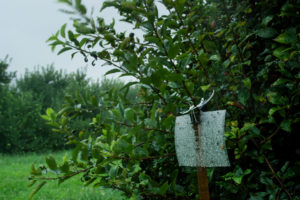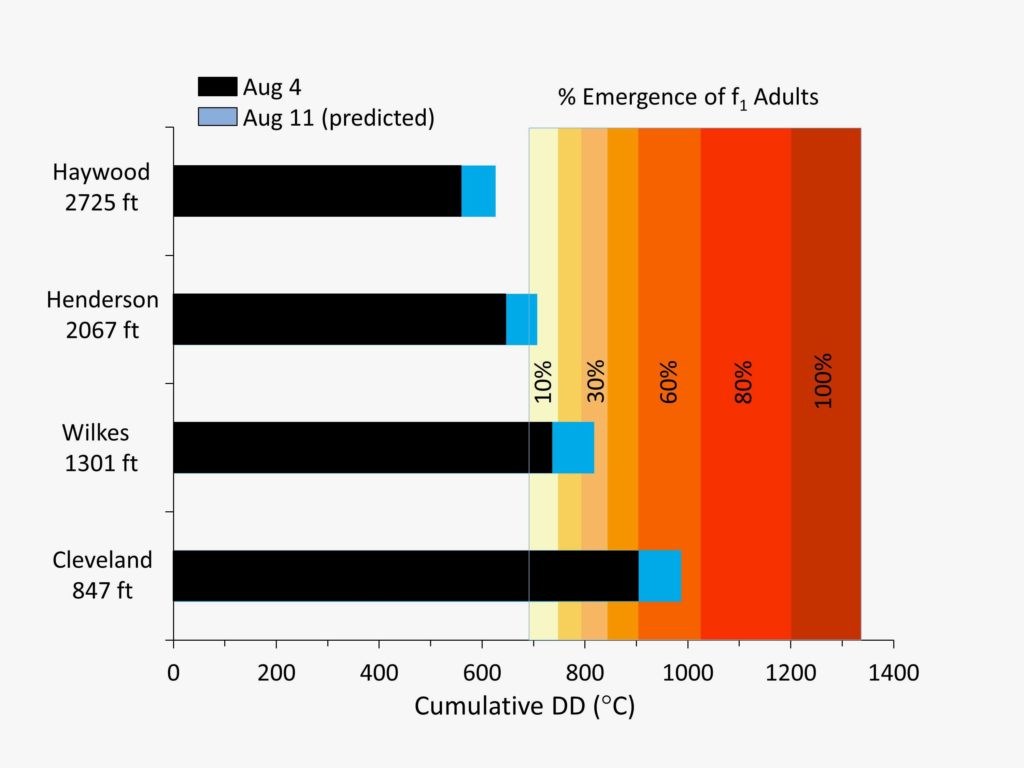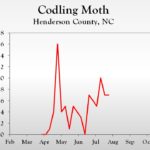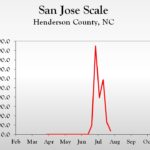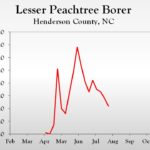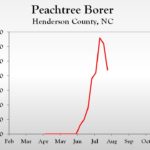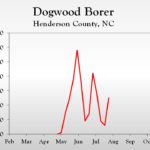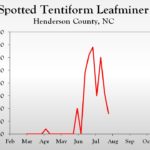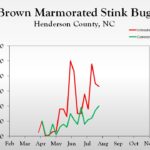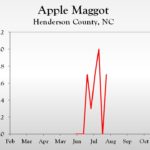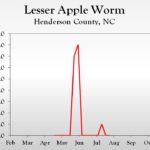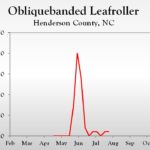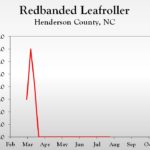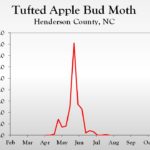WNC Orchard Insect Pest Populations – August 4, 2020
go.ncsu.edu/readext?718554
en Español / em Português
El inglés es el idioma de control de esta página. En la medida en que haya algún conflicto entre la traducción al inglés y la traducción, el inglés prevalece.
Al hacer clic en el enlace de traducción se activa un servicio de traducción gratuito para convertir la página al español. Al igual que con cualquier traducción por Internet, la conversión no es sensible al contexto y puede que no traduzca el texto en su significado original. NC State Extension no garantiza la exactitud del texto traducido. Por favor, tenga en cuenta que algunas aplicaciones y/o servicios pueden no funcionar como se espera cuando se traducen.
Português
Inglês é o idioma de controle desta página. Na medida que haja algum conflito entre o texto original em Inglês e a tradução, o Inglês prevalece.
Ao clicar no link de tradução, um serviço gratuito de tradução será ativado para converter a página para o Português. Como em qualquer tradução pela internet, a conversão não é sensivel ao contexto e pode não ocorrer a tradução para o significado orginal. O serviço de Extensão da Carolina do Norte (NC State Extension) não garante a exatidão do texto traduzido. Por favor, observe que algumas funções ou serviços podem não funcionar como esperado após a tradução.
English
English is the controlling language of this page. To the extent there is any conflict between the English text and the translation, English controls.
Clicking on the translation link activates a free translation service to convert the page to Spanish. As with any Internet translation, the conversion is not context-sensitive and may not translate the text to its original meaning. NC State Extension does not guarantee the accuracy of the translated text. Please note that some applications and/or services may not function as expected when translated.
Collapse ▲As has been the trend in recent weeks, overall insect pest pressure is low, and as we enter August the primary concern will be brown marmorated stink bug.
Codling Moth and Oriental Fruit Moth
About 2400 degree days (DD) have accumulated since biofix in Lincoln and Cleveland County, which corresponds with the end of second-generation egg hatch. In Henderson County, DD accumulations are almost 1900, which corresponds to almost 90% adult emergence and 65% egg hatch. Except for those few areas where populations have been high throughout the year, it is highly unlikely that problems will develop at this point. Relying on pheromone trap captures to monitor population activity is the best option.
OFM populations have been variable throughout the region. Specific control measures against OFM are not needed if pheromone trap captures remain below 10 moths per trap. Where pyrethroids will be sprayed for BMSB, that application will also control OFM. If BMSB is not an issue and a pyrethroid is not necessary, a sprayable OFM pheromone application is also very effective. Finally, in orchards using mating disruption, it is unlikely that additional control measures will be necessary.
Brown Marmorated Stink Bug
Currently BMSB is of greatest concern in lower elevation orchards (<1000 ft elevation). Adult numbers generally begin to increase quite rapidly between 10 and 20% emergence, or around 750 DD after biofix (see chart below). In Cleveland County, where almost 50% of adults have emerged, expect populations to be high in hotspots. In the Wilkes County area, emergence has just recently begun, so expect to see numbers increase over the next couple of weeks. Finally, emergence in Henderson County is not expected to begin until next week, and for almost two weeks in Haywood County.
Apple Maggot
Captures of apple maggot flies remain low at our abandoned orchard site. Last year captures were also somewhat late, not increasing in numbers until 19 August. While not all orchards are susceptible to apple maggot infestation, the later the emergence the greater the chance it will coincide with sprays for BMSB, which are also effective against apple maggot.
Learn more about southeastern apple insect pests at the Apple Insect Management page.
2020 Average Weekly Trap Captures
| HENDERSON COUNTY | |||
| Insects per trap | |||
| Jul 20 | Jul 27 | Aug 3 | |
| Codling moth | 1.0 | 0.7 | 0.7 |
| Oriental fruit moth | 2.9 | 4.8 | 4.2 |
| Tufted apple bud moth | 0.0 | 0.5 | 0.0 |
| Redbanded leafroller | 0.0 | 0.0 | 0.0 |
| Obliquebanded leafroller | 0.0 | 1.0 | 1.0 |
| Lesser appleworm | 1.0 | 0.0 | 0.0 |
| Apple maggot (abandoned and research orchards) | 1.0 | 0.0 | 0.7 |
| Brown marmorated stink bug (commercial) | 1.2 | 1.7 | 2.0 |
| Brown marmorated stink bug (unsprayed) | 4.3 | 3.5 | 3.3 |
| Spotted tentiform leafminer | 30.0 | 16.0 | 8.0 |
| Dogwood borer | 9.0 | 6.0 | 25.0 |
| Peachtree borer | 33.0 | 31.0 | 22.0 |
| Lesser peachtree borer | 33.0 | 28.0 | 22.0 |
| San Jose scale | 1172.5 | 265.0 | 72.5 |
*Note that these averages illustrate only the timing of insect emergence and fluctuations in populations, and are not representative of population levels in any given orchard. The only way to have an accurate assessment of an individual orchard’s populations is to set up traps in that orchard.
2020 Accumulated Degree Days
| HENDERSON COUNTY | ||||
| Jul 20 | Jul 27 | Aug 3 | ||
| Codling moth (Biofix 4/20) | 1406 DD | 1581 DD | 1781 DD | |
| Oriental fruit moth (Biofix 3/30) | 2008 DD | 2218 DD | 2459 DD | |
| Tufted apple bud moth (Biofix 4/27) | 1750 DD | 1960 DD | 2201 DD | |
2020 Pest Trends (click to enlarge)
Visit WNC Orchard Insect Populations for archived posts.



